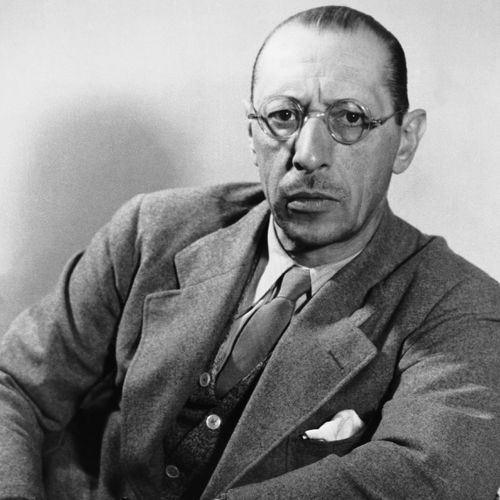Program Note | Histoire du Soldat
June 26 though July 26, 2022
 IGOR STRAVINSKY
IGOR STRAVINSKY
Born 1882, Oranienbaum, Russia
Died 1971, New York City
Histoire du Soldat
Stravinsky spent the difficult period of World War I in Switzerland. The war prevented productions of Stravinsky’s music, halting his income, and the Russian Revolution cut him off from his homeland. Stravinsky became friends with the Swiss novelist C.F. Ramuz and suggested that they create a theater piece based on two Russian folktales about the devil and a soldier. The version that Ramuz and Stravinsky created became Histoire du Soldat―The Soldier’s Tale―completed in 1918. Histoire du Soldat reeks with the angry disillusion generated by World War I. The tale is a bitter one: the soldier―it does not matter which country or army he is from―battles the devil and even wins a few rounds, but the ultimate triumph must belong to the devil.
Stravinsky wrote Histoire for an ensemble of seven players and three actors (and, in the original version, a dancer). This is not a play, an opera, or a ballet, but more accurately a theater piece, and Stravinsky hoped that with such a small number of performers, Histoire could be taken on tour and performed in villages. Stravinsky chose two instruments from each instrumental family, trying to achieve the widest tonal range possible: violin and double bass, clarinet and bassoon; trumpet and trombone; he also added a percussionist responsible for a number of different instruments.
At its first performance on September 28, 1918, Histoire was a great success, but Stravinsky’s hopes for financial success from a tour were quickly dashed. The flu epidemic of 1918 hit Switzerland at this point, affecting several of the performers, and the tour had to be abandoned.
The rhythmic Soldier’s March opens Histoire and introduces the soldier on his way home on leave; it will recur at several points during the tale. In the first scene, the devil appears as an old man with a butterfly net. He accosts a young soldier returning home on leave and offers to buy his fiddle (the violin symbolizes the soldier’s soul) in exchange for a magic book. The Soldier’s Violin is the music the soldier plays when, while resting by a brook, he pulls an old violin from his pack, tunes it up, and plays a propulsive interlude. When the soldier reaches his village, he realizes that he has been deceived: Three years have passed, his fiancée is married to someone else and has two children, and none of his friends can even see him. Disguised as a cattle merchant, the devil appears and shows the young man how the book can make him rich.
The devil next appears as a clothes merchant to the soldier, who has become very successful financially but is unhappy. Seeing that the clothes merchant has his old violin, the soldier seizes it and tries to play, but finds that it will now make no sound; in despair, he hurls it offstage. Now comes the famous Royal March, with its swirling trumpet quintuplets. In this scene, the king’s daughter lies ill, and the king has promised her hand to anyone who can cure her. Encouraged by the devil (now disguised as a violin virtuoso) to try to cure her, the soldier plays cards with the devil, gets him drunk, and gets back his violin. The soldier approaches the sick princess and plays the violin for her. She rises and dances three different dances, two of them influenced by jazz―Tango, Waltz, and Ragtime―and then embraces the soldier. The devil appears, this time as a devil with a pointed tail, and the soldier uses his violin to triumph over him. The Devil’s Song, with its promise of ultimate triumph, is framed by two Chorales, somewhat in the manner of Lutheran chorales of Northern Germany.
In the last scene the devil achieves his final triumph. Several years have passed, and the soldier and princess go to visit his home. Once they pass the frontier, the devil, dressed in brilliant scarlet, appears and gets control of the violin. Defeated, the soldier slowly follows him. L’Histoire du Soldat began with a march, and now it concludes with another, the Triumphal March of the Devil. Brilliant and animated, this music grows leaner as it proceeds―the other instruments drop out, leaving only the percussion to bring the music to its eerie close. Many have compared this effect to stripping away the extraneous to leave only the music’s skeleton―a fitting conclusion to this tale of demonic triumph.
-Program Note by Eric Bromberger


